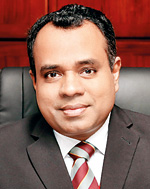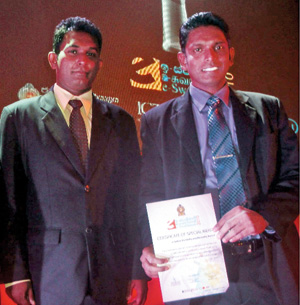eIMMR, the first eHealth System to be implemented islandwide – Special Report
A simple eHealth solution transforming Health Information gathering in Sri Lanka. In 2009, Dr. Nadish Kariyawasam and Dr. Buddhika Dayarathne, two students in the MSc in Biomedical Informatics course at the Postgraduate Institute of Medicine walked in to the Medical Statistics Unit (MSU) of the Ministry of Health with the hope of commencing their MSc project. They had no idea then that they would create an online real time web based information system that would go on to become the first system to be implemented in all hospitals in the country.

Prof. Vajira Dissanayake
The eIMMR, or the electronic Indoor Morbidity and Mortality Reporting system, created by them has had a transformative impact. The financial investment for the Ministry of Health to create the system was only the salary of the two doctors. So what is this system all about, and why is it so important?
There are 624 hospitals throughout the country providing indoor care for patients. There are on average 5 to 6 million admissions to these hospitals annually, and of these admissions approximately 40,000 to 45,000 patients die. The data on the admissions (morbidity) and on deaths (mortality) was manually collected in the past and sent to the Medical Statistics Unit (MSU) of the Ministry of Health where it was compiled and reports generated. A time consuming, tedious process. The main report that carries this information is the Annual Health Bulletin. As a result of the manual process of data gathering, the bulletin was never on time. In fact, in 2009, when Nadish and Buddhika walked in to the MSU, the latest bulletin was for 2003. Six years out of date.
A simple solution
They created a simple system that captured the essential data elements on a one-page web interface. The system was centrally deployed in a server at the MSU. All that was necessary in hospitals was a computer with an Internet connection. The data entry could begin then and there. By the end of 2014, the system was deployed in 180 hospitals (28.8 per cent) in the country including 151 hospitals in provinces. The data gathered covers 53.4 per cent of all admissions in the country. It is expected that by the end of 2017 when 70 per cent of hospitals in the country are in the network and entering data into the eIMMR, over 95 per cent of all hospital data will be collected through the system.

Dr Nadish Kariyawasam (Left) and Dr Buddhika Dayarathne (Right) with the eSwabhimani Merit Certificate for eIMMR in 2010
Getting to this point has been a tireless effort for Buddhika, who is the man handling the implementation on the ground. When he did the initial facility survey in hospitals he found that only 22.6 per cent of hospitals had computers and only 5.1 per cent had Internet connectivity. That meant that funds were needed to upgrade the record rooms. Therefore the beginning was slow. Scaling up was made possible in 2013 however with funding coming in from the second Health Sector Development Project, funded by the World Bank. Implementation of eIMMR was identified as one of the main disbursement linked indicators of the project. That meant that funding for its implementation was not an issue anymore.
An up-to-date Annual Health Bulletin
The next hurdle was training users on the system. There are 1,300 persons handling IMMR data in every corner of the country from North to South and West to East. All these persons had to be trained. This was done through 25 workshops, one each in every district of the country, in 2014, and a two weeks training programme on medical coding at the National Institute of Health Sciences, Kalutara. A massive task one may say. As a result of these efforts, today, there are 738 users who enter data to the system on a daily basis. The system contains a total of 3,904,101 records entered by them. The biggest impact is however, a timely Annual Health Bulletin. Today, the Ministry of Health has caught on. The latest Bulletin for 2012 was published in September 2014. So hopefully by 2017, we will have the previous year’s bulletin coming out on time. So the eIMMR system has set the standard for eHealth implementation in Sri Lanka.
What we aimed to do when we began the MSc in Biomedical Informatics course at the PGIM in 2008 was to produce the next generation of eHealth leaders in Sri Lanka. We have to salute dedicated innovative doctors like Nadish and Buddhika for giving leadership to the transformational change in the Health Services in Sri Lanka, needed so badly to make it more efficient. In 2010, they received a Merit Certificate at eSwabhimani awards. Today, however, I think they deserve the winners’ award.
The writer is the Director and Medical Geneticist at the Human Genetics Unit, Faculty of Medicine, University of Colombo. He is also the Founder Secretary (in 1998) and the current President (since 2009) of the Health Informatics Society of Sri Lanka.
He can be contacted at vajirahwd@hotmail.com.


